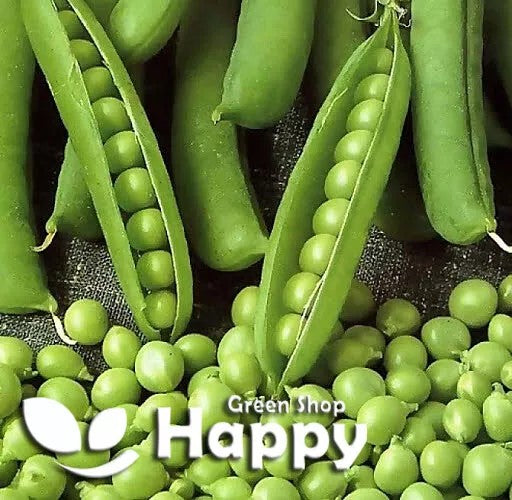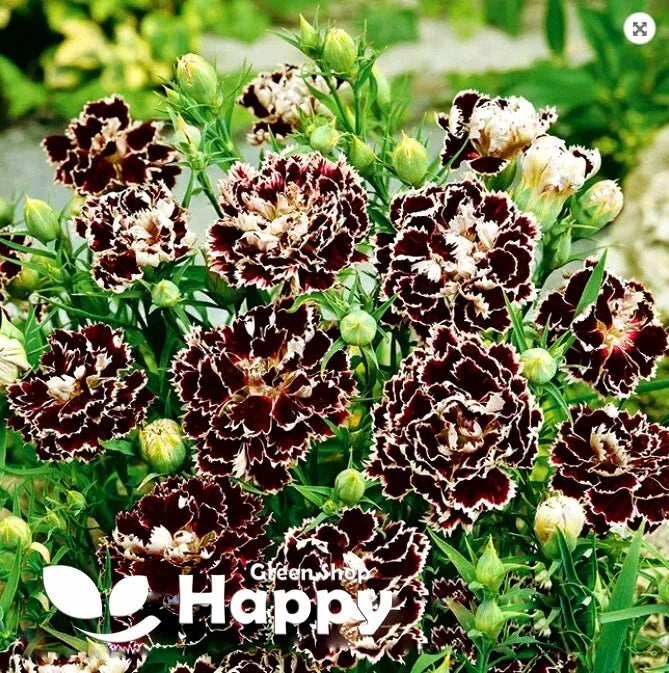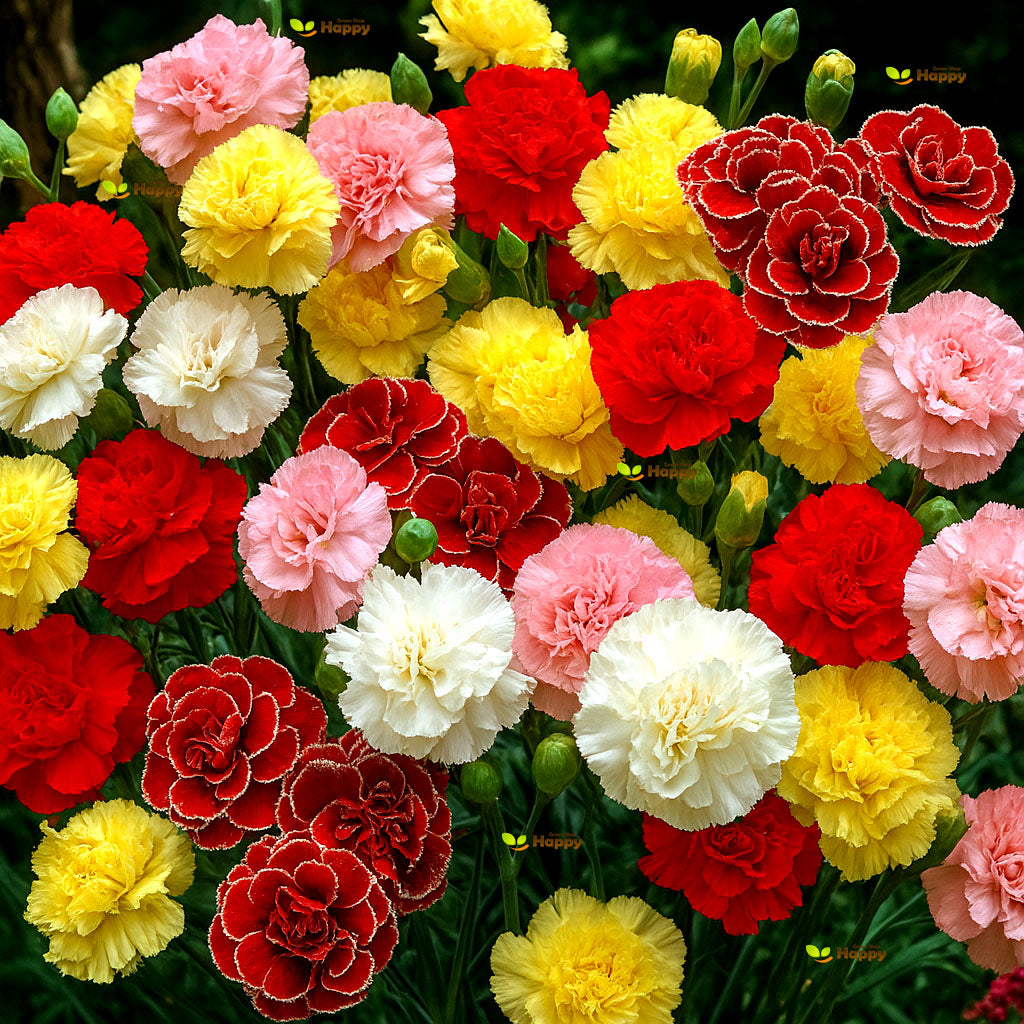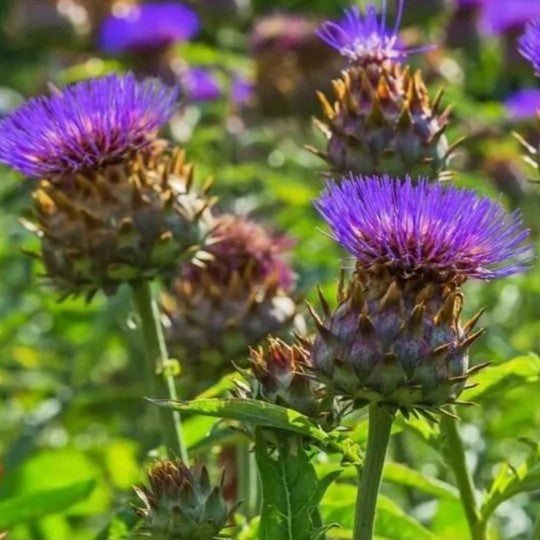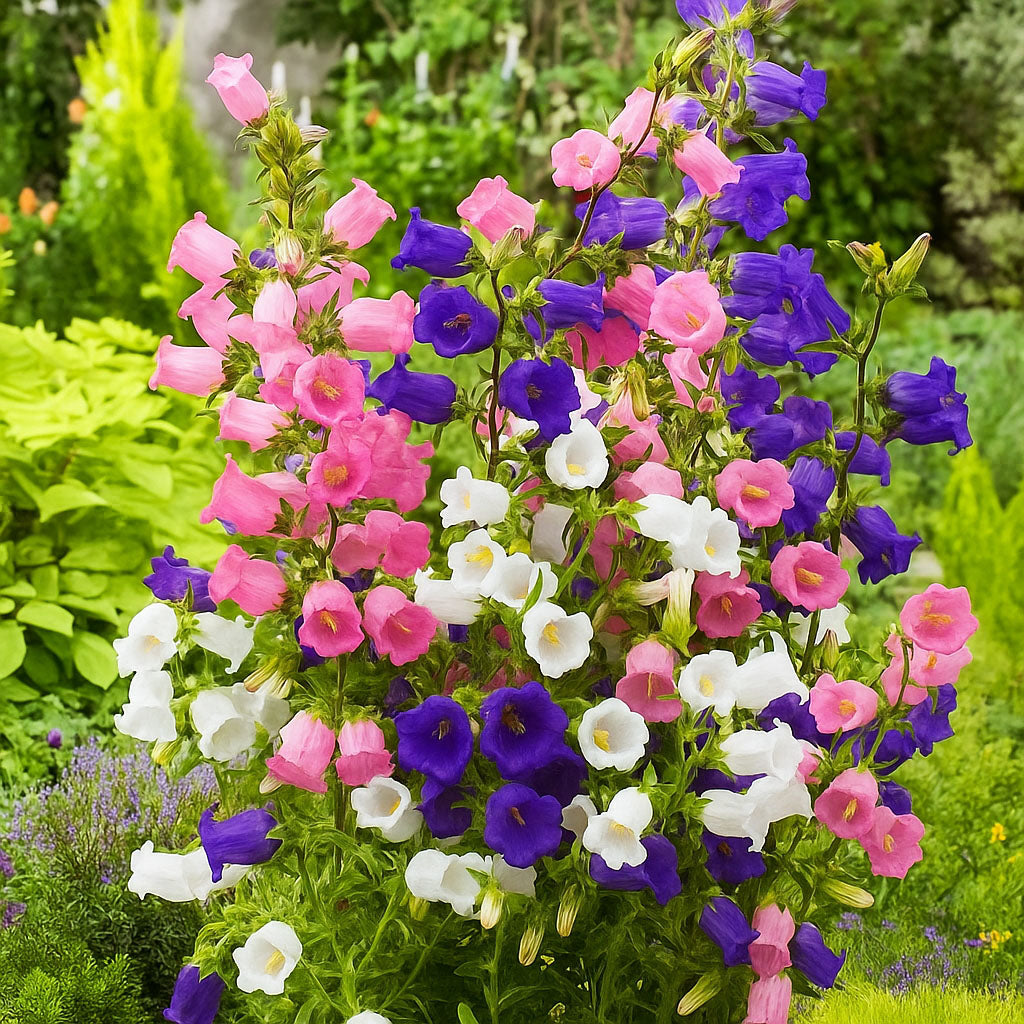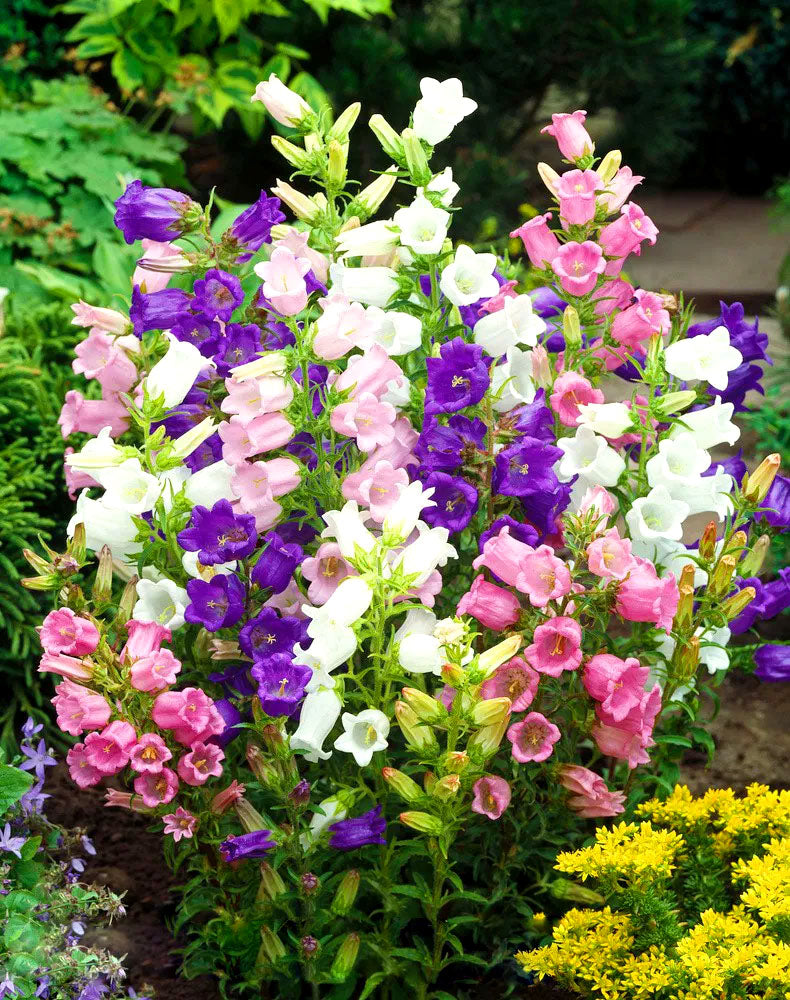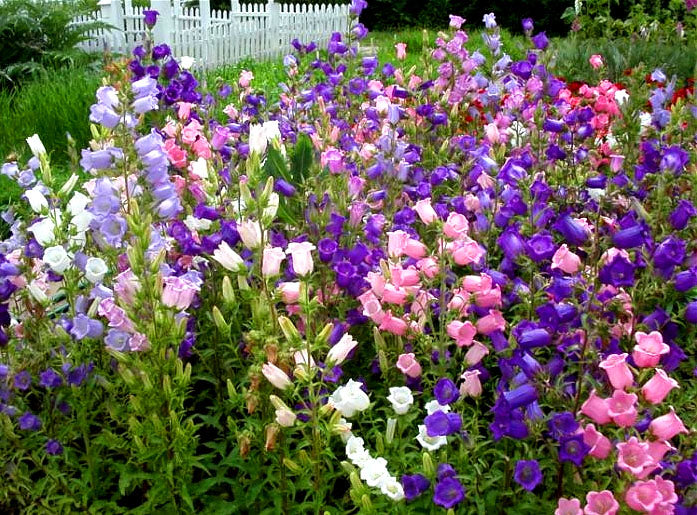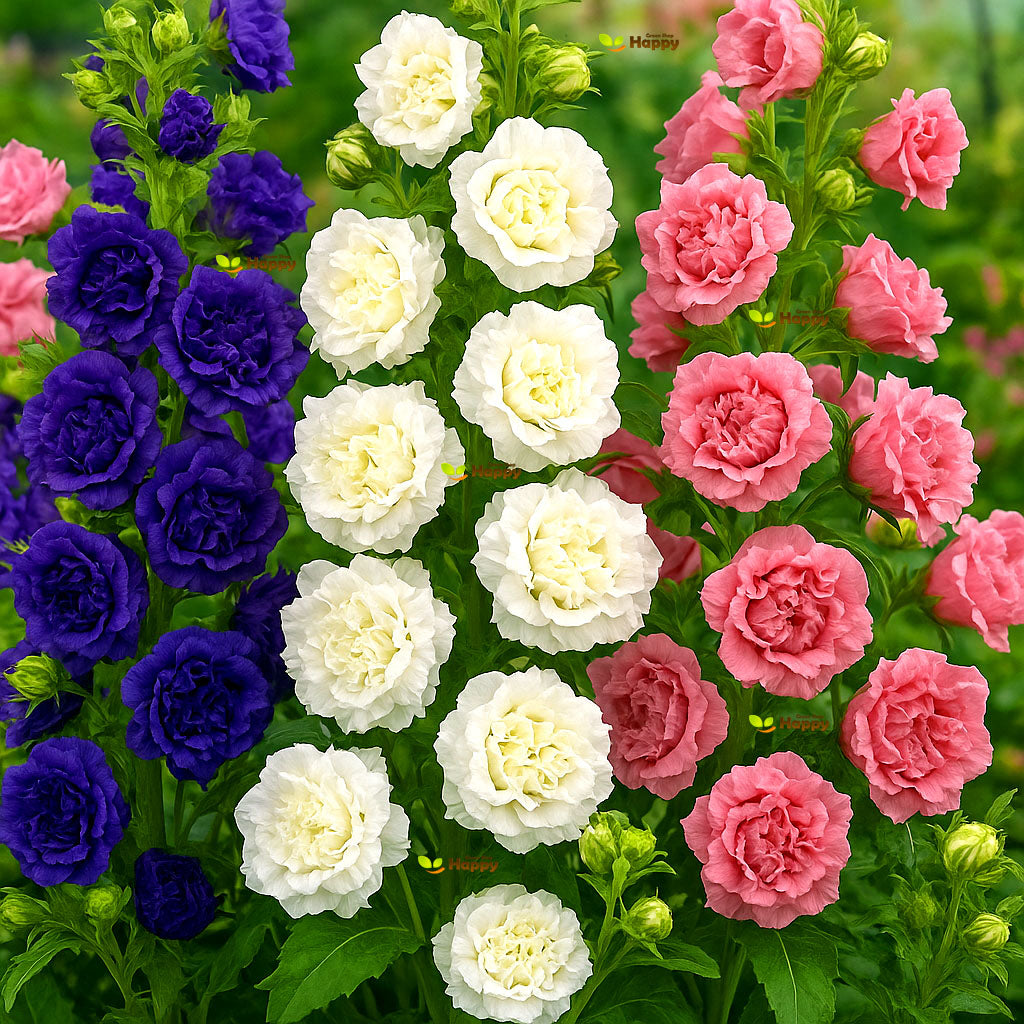Sort by:
351 products
351 products
Carnation Chadbaud ‘Benigna’ – 100 Seeds (Dianthus caryophyllus)
Carnation Chadbaud ‘Benigna’ (Dianthus caryophyllus) is a beautiful, compact annual with soft pink, fragrant blooms. Perfect for borders, rockeries, and containers, it adds elegance and color to your garden from late spring to autumn. Easy to grow and long-flowering, it also attracts pollinators.
Why Grow "Benigna"
-
Fragrant soft pink blooms
-
Compact, bushy growth habit
-
Long flowering period from late spring to autumn
-
Attracts bees and butterflies
Key Features
-
Type: Annual (Dianthus caryophyllus)
-
Height: 20–30 cm
-
Flowering: May–October
-
Position: Full sun to partial shade
-
Uses: Borders, rockeries, containers, patios, cottage gardens
Ideal For
-
Small garden beds and borders
-
Rockeries and container planting
-
Patio displays and window boxes
-
Pollinator-friendly gardens
Sowing & Growing
-
Sow indoors: February–April in seed trays
-
Sow outdoors: April–May after frost
-
Germination: 10–20 days at 18–22°C
-
Thin seedlings to 15–20 cm apart
-
Prefers full sun and well-drained soil
-
Deadhead to encourage prolonged flowering
Carnation Black – Seeds (Dianthus heddewigii ‘Chianti’)
Carnation ‘Black Chianti’ is a dramatic annual with deep, velvety maroon to near-black blooms that make a bold statement in beds, borders, and cut arrangements. Its compact habit, long flowering season, and striking color bring elegance and contrast to any garden. Easy to grow and perfect for adding depth to mixed displays.
Why Grow "Black Chianti"
-
Striking near-black, velvety blooms
-
Compact and easy to grow
-
Long flowering season
-
Great for cutting and arrangements
Key Features
-
Type: Hardy annual (Dianthus heddewigii)
-
Height: 30–45 cm
-
Flowering: June–September
-
Position: Full sun, well-drained soil
-
Uses: Borders, containers, cut flowers
Ideal For
-
Bold bedding schemes
-
Patio containers
-
Cottage and modern gardens
-
Dark accents in floral displays
Sowing & Growing
-
Sow indoors: February–April in trays/pots
-
Sow outdoors: April–June in prepared soil
-
Germination: 7–14 days at 18–22°C
-
Transplant or thin to 20–25 cm apart
-
Remove spent blooms to extend flowering
Carnation ‘Vienna’ – 200 Seeds (Dwarf Vienna, Dianthus caryophyllus)
Carnation ‘Vienna’ (Dianthus caryophyllus Dwarf Vienna) is a charming annual producing compact, fragrant blooms in delicate pastel shades. Its dwarf, bushy habit makes it ideal for borders, rockeries, containers, and patios. Long-flowering and easy to grow, it adds elegance and fragrance to any garden while attracting pollinators.
Why Grow "Vienna"
-
Compact, bushy habit perfect for small spaces
-
Fragrant, delicate pastel-colored blooms
-
Long-lasting flowering from late spring to autumn
-
Attracts bees and butterflies
Key Features
-
Type: Annual (Dianthus caryophyllus, Dwarf Vienna)
-
Height: 20–30 cm
-
Flowering: May–October
-
Position: Full sun to partial shade
-
Uses: Borders, rockeries, containers, patios, cottage gardens
Ideal For
-
Small garden beds and borders
-
Rockeries and container planting
-
Patio displays and window boxes
-
Pollinator-friendly gardens
Sowing & Growing
-
Sow indoors: February–April in seed trays
-
Sow outdoors: April–May after frost
-
Germination: 10–20 days at 18–22°C
-
Thin seedlings to 15–20 cm apart
-
Prefers full sun and well-drained soil
-
Deadhead to encourage prolonged flowering
CARDOON SEEDS (Cynara cardunculus)
A striking architectural plant, Cardoon brings dramatic height and bold texture to the garden. With tall, silvery-grey foliage and large thistle-like purple blooms, it makes an impressive focal point in borders and ornamental plantings. Closely related to the globe artichoke, cardoon is also valued as an edible plant, with its blanched leaf stalks enjoyed as a Mediterranean delicacy.
Why Grow "Cardoon"
-
Bold, architectural plant for dramatic garden displays
-
Stunning purple thistle-like flowers loved by pollinators
-
Silvery foliage adds unique texture
-
Edible stems prized in Mediterranean cuisine
Key Features
-
Type: Perennial (Cynara cardunculus)
-
Height: 150–200 cm
-
Flowering: Summer (July–September)
-
Position: Full sun
-
Uses: Borders, architectural displays, edible gardening, pollinator-friendly
Ideal For
-
Adding dramatic height and texture to borders
-
Pollinator-friendly and wildlife gardens
-
Edible gardening with a Mediterranean twist
-
Cottage and ornamental gardens
Sowing & Growing
-
Sow indoors: 6–8 weeks before the last frost
-
Sow outdoors: After frost danger has passed
-
Germination: 14–21 days
-
Space seedlings: 90–120 cm apart
-
Prefers full sun and rich, well-drained soil
Cape Daisy Mix Seeds (Venidium fastuosum)
Add long-lasting summer color with Cape Daisy Mix (Venidium fastuosum). This hardy annual produces vibrant daisy-like blooms in shades of yellow, orange, and gold, bringing brightness to borders, beds, and containers. Easy to grow and drought-tolerant once established, it attracts pollinators and provides a cheerful display throughout the season.
How to Grow
-
Sow seeds directly outdoors in spring after the last frost or indoors 4–6 weeks earlier.
-
Use well-drained soil in full sun.
-
Scatter seeds thinly and cover lightly with soil.
-
Keep soil moist until germination (10–14 days).
-
Thin seedlings to 25–30 cm apart once established.
-
Deadhead spent flowers regularly to encourage continuous blooming.
Key Features
-
Vibrant daisy-like blooms in yellow, orange, and gold shades
-
Long-flowering, hardy annual
-
Easy to grow and drought-tolerant
-
Ideal for borders, beds, and containers
-
Attracts bees, butterflies, and other pollinators
Ideal For
-
Flower beds and borders
-
Containers, patio planters, and window boxes
-
Pollinator-friendly gardens
-
Cottage and naturalized garden styles
Sowing
-
Best time: Spring outdoors or 4–6 weeks earlier indoors
-
Germination: 10–14 days
-
Sow thinly, cover lightly, and keep soil moist
-
Prefers full sun and well-drained soil
Quick Tip
-
Deadhead regularly to maintain vibrant blooms and encourage prolonged flowering.
Canterbury Bells Mix Seeds (Campanula medium)
Canterbury Bells are classic biennial flowers cherished for their bell-shaped blooms in a range of vibrant colors. This mix produces tall, elegant stems covered in large, showy flowers that brighten borders, cottage gardens, and cut flower arrangements. With their long-lasting blooms and architectural form, they are perfect for adding vertical interest and charm to any garden.
What Makes It Special
-
Produces bell-shaped flowers in multiple colors
-
Tall, upright growth adds vertical structure to borders
-
Excellent for cut flowers with a long vase life
-
Biennial: flowers in the second year for a reliable display
Key Features
-
Botanical name: Campanula medium
-
Common name: Canterbury Bells
-
Seed count: Approx. seeds per pack
-
Height/Spread: 60–90 cm tall, 25–30 cm spread
-
Position: Full sun to partial shade, well-drained soil
-
Flowering period: Second year; early to mid-summer
-
Lifespan: Biennial
Ideal For
-
Borders and cottage-style gardens
-
Cut flower arrangements
-
Mixed flower beds
-
Pollinator-friendly gardens
Sowing Instructions
-
When to sow:
-
Indoors: February–March for transplanting
-
Outdoors: April–May in well-prepared soil
-
-
How to sow:
-
Sow seeds thinly on surface and lightly press into soil
-
Keep soil moist until germination (10–20 days)
-
-
Transplant/Thin: Space seedlings 25–30 cm apart
-
Care: Protect young plants from frost; stake taller varieties if needed
Canterbury Bells Double Mix – Seeds
(Campanula medium)
Canterbury Bells ‘Double Mix’ is a traditional cottage garden favorite, producing tall spires filled with large, fully double bell-shaped blooms. This colorful mix features shades of blue, pink, white, and lavender, bringing old-fashioned charm and elegance to borders, beds, and cutting gardens.
Why Grow Canterbury Bells Double Mix?
-
Stunning double blooms in soft pastel shades
-
Classic cottage garden plant with tall spires
-
Long-lasting cut flowers for arrangements
-
Reliable biennial, flowering the following year
Key Features
-
Type: Biennial
-
Height: 60–90 cm
-
Flowers: Early to mid-summer (second year)
-
Position: Full sun to partial shade
-
Soil: Well-drained, fertile soil
Ideal For
-
Cottage and traditional gardens
-
Flower borders and background planting
-
Cut flower arrangements
-
Pollinator-friendly spaces
Sowing & Growing
-
Sow indoors: May–July in trays of fine compost (do not cover seeds – light aids germination)
-
Germination: 14–21 days at 18–22°C
-
Transplant: Prick out seedlings and grow on before planting out in autumn
-
Care: Water regularly, deadhead faded blooms, and stake taller plants if needed
Canterbury bells 'Cup and saucer' mix - 2000 seeds (Campanula medium Calycanthema)
£1.15
Unit price perCanterbury bells 'Cup and saucer' mix - 2000 seeds (Campanula medium Calycanthema)
£1.15
Unit price perCanterbury Bells ‘Cup and Saucer’ Mix – Seeds (Campanula medium calycanthema)
Description:
Bring timeless charm to your garden with Canterbury Bells ‘Cup and Saucer’ Mix, a classic Campanula medium calycanthema variety celebrated for its distinctive bell-shaped blooms surrounded by delicate “saucers.” This enchanting biennial mix produces tall, sturdy stems covered in pastel shades of blue, pink, white, and lavender. Perfect for cottage gardens, borders, and cutting gardens, these long-lasting flowers make stunning summer displays both in beds and bouquets.
Key Features
-
Unique “cup and saucer” double blooms
-
Elegant mix of blue, pink, white, and lavender shades
-
Tall, upright habit perfect for borders and cutting
-
Attracts bees and pollinators
-
Traditional cottage garden favorite
Ideal For
-
Cottage and country-style gardens
-
Flower borders and mixed beds
-
Cut flower arrangements
-
Pollinator-friendly planting
Sowing & Growing
-
Sow Indoors: February–April
-
Transplant Outdoors: May–June
-
Flowering: June–August (following year)
-
Height: 60–80 cm
-
Spacing: 30 cm apart
-
Light: Full sun or partial shade
-
Soil: Fertile, well-drained
Care Tips
-
Deadhead to encourage extended flowering
-
Water moderately; avoid waterlogging
-
Support tall stems if exposed to strong winds
-
Allow some plants to self-seed for future blooms
Canary Creeper – Seeds (Tropaeolum peregrinum)
A charming climbing annual, the Canary Creeper is a cousin of the nasturtium, known for its deeply cut leaves and unusual, canary-yellow, fringed flowers. A vigorous, fast-growing climber, it will quickly cover trellises, arches, and fences, bringing a cheerful splash of color and attracting pollinators to your garden.
Highlights
-
Exotic canary-yellow flowers with fringed petals
-
Quick-growing climbing annual
-
Attractive, deeply lobed foliage
-
Long flowering period from summer until frost
-
Pollinator-friendly
Key Features
-
Botanical Name: Tropaeolum peregrinum
-
Seed Count: Approx. seeds per pack (please confirm quantity)
-
Height/Spread: 2–3 m when supported
-
Position: Full sun, well-drained soil
-
Flowering Period: Summer to first frost
Perfect For
-
Covering trellises, fences, arches, or obelisks
-
Quick vertical garden interest
-
Pollinator-friendly and wildlife gardens
-
Adding an exotic look to cottage gardens
Sowing Instructions
-
Sow indoors 4–6 weeks before the last frost or outdoors after frost danger has passed
-
Plant seeds 1.5–2 cm deep in pots or soil
-
Provide climbing support for vines
-
Germination: 10–21 days at 15–20°C
-
Flowers 10–12 weeks after sowing
Showing 306/351

